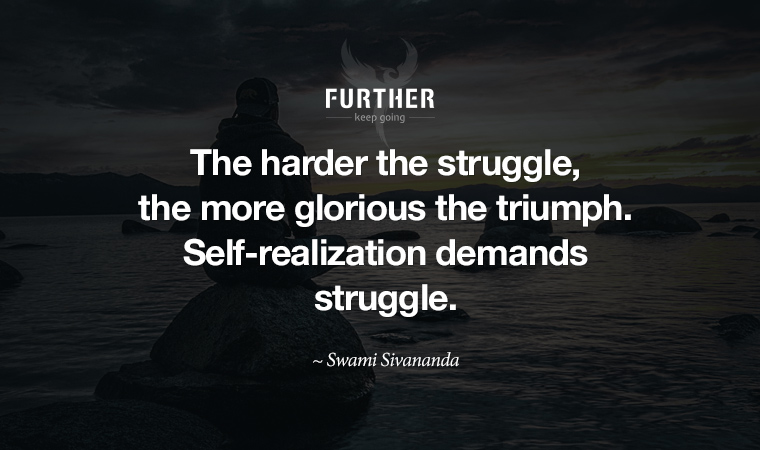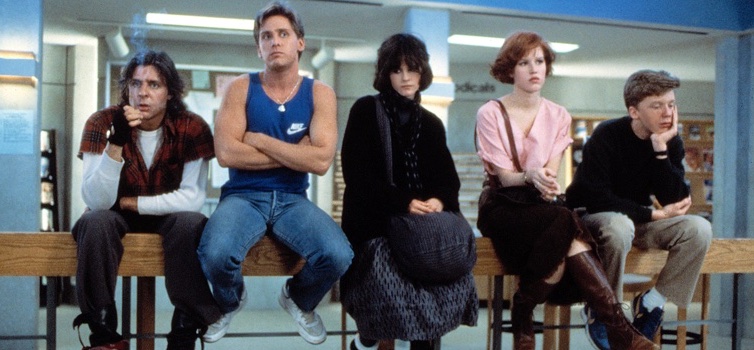
When I first started Further, it was all about refuting the idea that a life of leisure was the key to happiness. That instead, we experienced well-being by pushing ourselves to get better and learn new things.
Later, I realized I was increasingly writing from the perspective of midlife. And that despite the doldrums of our 40s, things get much better around 50 as we start growing in the ways we want instead of doing what we think we should.
A recent study reports that younger Gen Xers are suffering from despair as they enter middle age. This corresponds with the traditional midlife slump, but there seems to be more going on.
Depression, suicide, drug and alcohol abuse — are rising among those in their late 30s and early 40s, and it’s occurring across-the-board, researchers say.
At this stage of life, you’re dealing with intense family, work, and social situations. Add to that overall societal trends that have led many to feel hopeless and helpless, and we’ve got a major problem.
It may come down to control. When we choose our struggles, we’re guiding our own personal growth. It’s when our struggles feel beyond our control, however, that we truly learn who we are and what we’re capable of.
This is likely why many 40-somethings turn to triathlons and other forms of extreme athleticism at midlife. It’s less about recapturing youth, and more about learning how to get better at getting older through self-imposed struggle.
Plus, the exercise, nutrition, and sleep regimen that comes with training helps you stay centered and better deal with your life challenges. Maybe you even gain additional perspective when you experience that fitness makes us happier than money.
Sometimes the struggle of life wears us down. But struggle is also how we grow. This is inherently how life is (whether it’s our choice to push ourselves or otherwise), and it still beats the alternative.
It may seem counter-intuitive to further challenge yourself when things are tough. But it may be exactly what you need to embrace life to the fullest.
Keep going-
P.S. Don’t you worry — my commentary on that wonderful New York Times profile of Generation X is below. And Trudi takes you on a tour a various meditation techniques so you can pick the one that’s right for you.
Gen X no longer ignored (oh, wait …)

©Universal Pictures/Courtesy Everett Collection
By Brian Clark
It was mid-morning yesterday when I allowed myself to take a peek at Twitter, only to see that Gen X was trending. Almost instantaneously, the emails and texts from Further readers started to roll in.
Apparently I’m the “Gen X guy” now. And damn pleased about it, thank you very much.
Anyway, the New York Times released a weird thing titled Gen X is a Mess, which is itself a mess. Seriously, it looks like something Ben Stiller’s character in Reality Bites might create in a futile attempt to impress Winona Ryder’s character.
Buried within this train wreck of bite-sized nostalgia bits is an essay that’s mostly positive, despite the derogatory title. This whole thing was apparently put together by Gen Xers, so why the self loathing? Or were the headline decisions left to a snide Boomer editor?
Never mind, let’s move on.
In many ways, this piece makes the same case I made in last month’s Further Feature: Why Generation X is Running the Show. In short, despite the smaller size of our generation, we’ve had a defining impact on the go-forward culture, both for better and worse.
After the obligatory recitation of cliched observations about us from 1990, the article takes a turn:
What if everything we decided about Generation X turned out to be wrong?
What if, indeed. Let’s look at some of the high points. At minimum, you’ll see that we’ve been on the right track here (or perhaps the author of the piece is a Further reader — although, probably not).
1. We were never slackers
Put this one in the “no duh” category. We talked about this just last week.
“Even though my friends and I all looked like extras from ‘Reality Bites,’” said Sarah Vowell (b. 1969), an author and contributor to This American Life, “our Puritan work ethic was probably more 1690s than 1990s.”
Not only are we not slackers, we’re the hardest working of all the active generations. If anything, we need to learn to chill a bit — but it’s hard when many Gen Xers are raising Gen Z kids while caring for Boomer parents.
2. We totally did sell out
As I’ve brought up several times, our generation seemed completely disinterested in traditional concepts of success — until the internet came along, that is. The article comes to the same conclusion, although I disagree with the “selling out” aspect.
It’s not like we latched onto the “Greed is good” Boomer bullshit of the 80s. We saw the internet as a way to carve out our own path on our own terms — and many of us did.
Now, I suppose we also have to take the blame for Millennial tech bros who are basically Gordon Gekko with a pocket protector. Such is life.
3. We invented “woke”
This is where the article gets interesting. The stereotype of Generation X as a bunch of apathetic cynics never matched my experience. I remember us as being educated young people who understand the true nature of business, society, and justice, and wanted to do something to make things better.
Still, we tend to be more pragmatic than the younger Millennials, while not anything like the conservative Boomers. We care, and yet we’re steeped in self reliance, which leads to a strong centrist streak:
This scrappy, if self-defeating, independent streak was a consequence of our under-parenting. “If you wanted lunch and Mom and Dad weren’t around, all the moral values in the world wouldn’t add up to a grilled cheese sandwich,” Mr. Rosen wrote.
Mmmm. Grilled cheese. We made that an after-school art form, right?
The article ends on a hopeful note, and it’s one that I’ve stated repeatedly and truly believe. If anyone is going to fix this mess, it’s us. Illegitimi non carborundum.
Actually, Gen X Did Sell Out, Invent All Things Millennial, and Cause Everything Else That’s Great and Awful (New York Times)
How to choose the best meditation practice

By Trudi Roth
At a recent dinner party, meditative practices were the hot topic. I chatted with a Reiki hobbyist, a QiGong enthusiast, and a friend who insisted I try a “Chakra Lullaby” class at her drop-in meditation studio.
Of course it’s not news that an ancient practice dominates today’s wellness space — although a new CDC report states meditation is the fastest growing U.S. health trend. For years now you’ve read about the science-backed benefits of meditation here on Further, including stress reduction, better sleep, improved productivity, burnout relief, and real shifts in your brain composition for overall well-being.
As a Vedic meditation teacher in training, I’m thrilled to see so many people tapping into bliss chemistry to combat our “anxiety economy.” And I also see the challenge of McMindfulness — the commodification of well-being — where the avalanche of options, including 2,000+ apps, may be creating more stress than they relieve.
So how do you turn your hmm into an om and find the right approach for you?
Meditation isn’t one size fits all
Meditation has always been a personal choice: some yogis spend years alone in a cave, while others prefer sitting silently shoulder-to-shoulder with fellow meditators in jam-packed halls.
As Bob Roth, a leading meditation expert and CEO of the nonprofit David Lynch Foundation, notes, the key is to get clear on your priorities to find your own particular brand of Zen.
The future is more medical studies evaluating the types head-to-head and more people grasping that specific meditation practices have specific benefits for specific people. It’s not that one is better than the other, per se. And it shouldn’t be an either/or but really a yes/and—because we should think of meditation types as a personal toolbox.
Roth recommends thinking of meditation in three categories: focused attention, open monitoring and self-transcending.
Pick your prana
Focused attention clears your mind of thoughts by focusing on objects, body sensations, or your breath. If you want to improve your concentration and productivity, this is a good choice.
Open monitoring is essentially mindfulness meditation, where you observe your mind’s contents. This can be anything from taking a walk to a guided meditation. Improved emotional regulation, cognitive control, and ability to pay attention are all benefits.
Self-transcending requires no cognitive work; just a mantra to effortlessly dive into the silent depths of your mind. Studies support transcending techniques’ health (especially heart) benefits, as well as an awakening of the brain’s “imagination network” -— perfect for creative types.
You know how you work, so now you can pick the kind of meditation that works best for you. Namaste. 🙂
Meditation Goes Plural (Global Wellness Summit)
further: flashback

Adam Ant – Goody Two Shoes
Friend or Foe, 1982
Adam Ant was in a chart-topping UK group called Adam and the Ants from 1977 to 1982. After the group ended, the rest of the Ants became Bow Wow Wow along with singer Annabella Lwin. Adam went solo and broke through in the US with Goody Two Shoes — especially with the ladies. (YouTube)
further: sharing
Please forward this issue of Further to a friend. Thank you!
